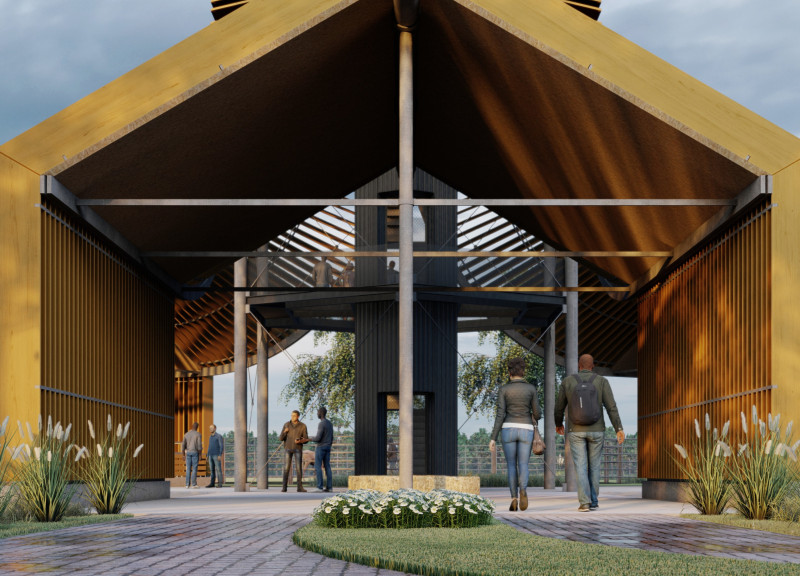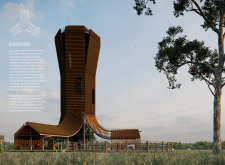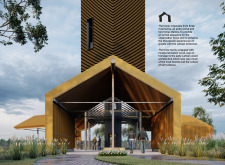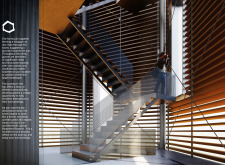5 key facts about this project
Kurgi Tower is located in the North Vidzeme Biosphere Reserve in Latvia, a region known for its ecological importance and rich cultural history. The tower serves as an observation point and a landmark. It aims to create a strong connection between visitors and the landscape while also supporting the conservation of the endangered Latvian horse breed. The design concept integrates architecture with nature, guiding visitors on a journey that encourages an appreciation of the environment.
Architectural Form
The tower's hexagonal shape represents the idea of a journey toward understanding. It includes three distinct forms—a main entry portal and two horse stables—crafted to aid visitors in transitioning into the observation space. This arrangement adds depth to the experience as visitors move through different areas that relate to the surrounding landscape.
Materiality
Materials used in Kurgi Tower are chosen with the local context in mind. Locally harvested wood wraps around the structure, reflecting the traditions of early Latvian wood architecture. This choice of materials not only connects the tower to its setting but also encourages a sustainable approach. The design respects the environment and reinforces the idea that architecture can coexist with nature.
Visitor Experience
Along the path to the top, multiple viewing portals are integrated into the design. These openings frame views of significant landmarks and natural features, enhancing wayfinding for visitors. As people ascend, they engage with the landscape, fostering a sense of awareness about the local ecosystem. This element of discovery enriches their understanding and appreciation of where they are.
Observation Deck
At the top of Kurgi Tower, the observation deck unfolds gradually, likened to a flower opening. It offers uninterrupted 360-degree views of Kurgi Farm and the North Vidzeme Biosphere Reserve. This space serves not only as a destination but also as a moment for visitors to pause, reflect, and immerse themselves in the surrounding beauty of the landscape.





















































